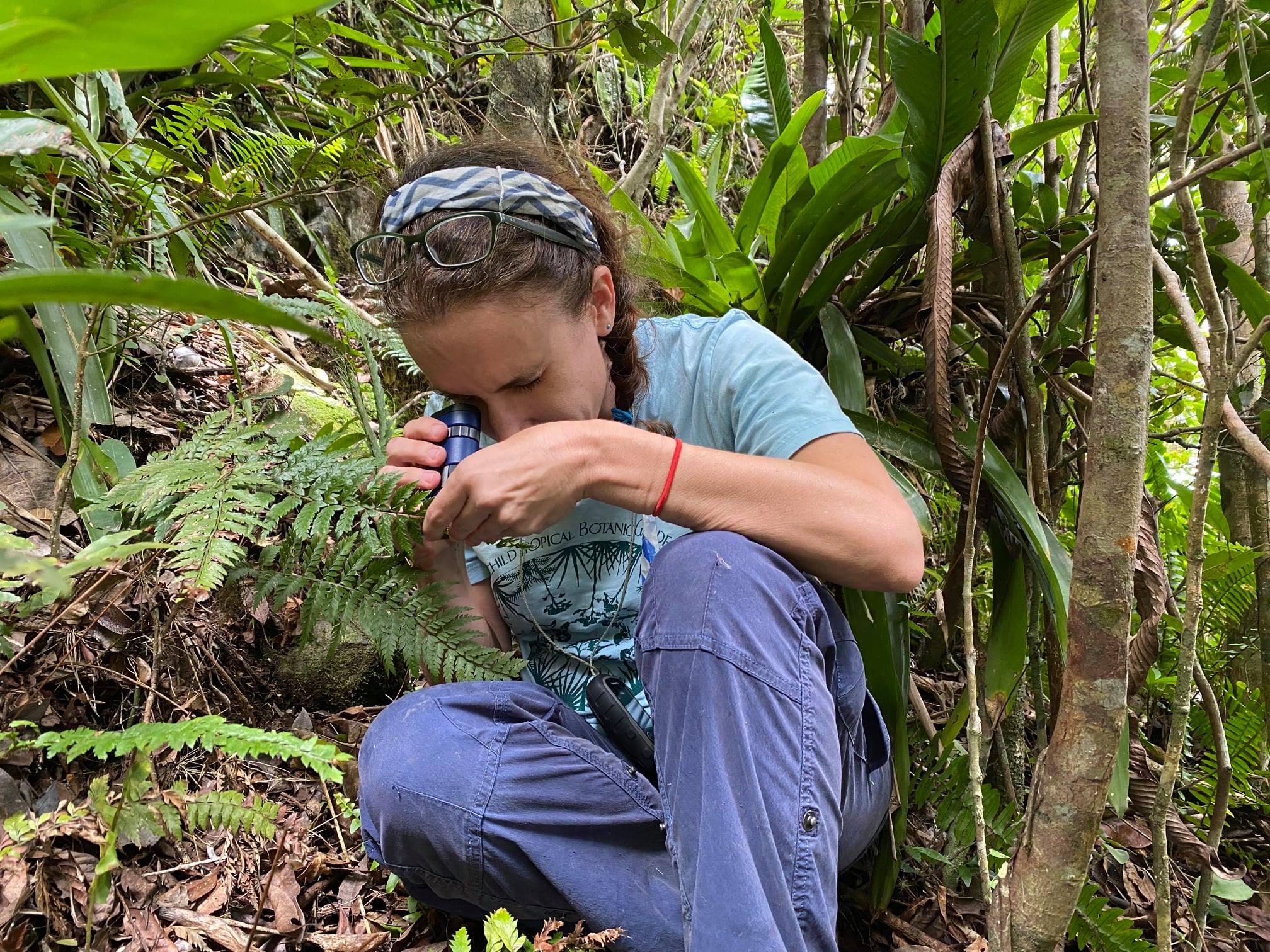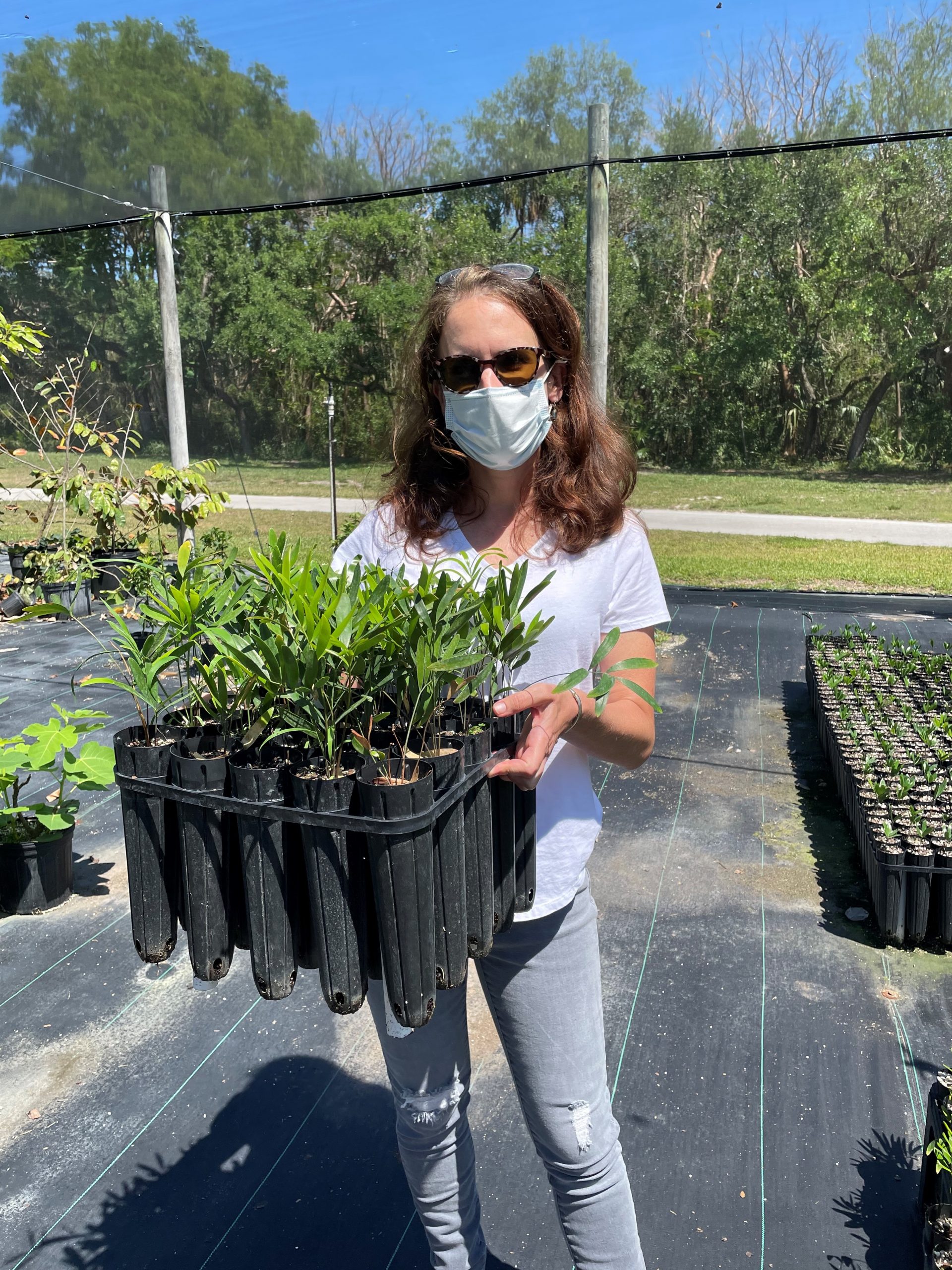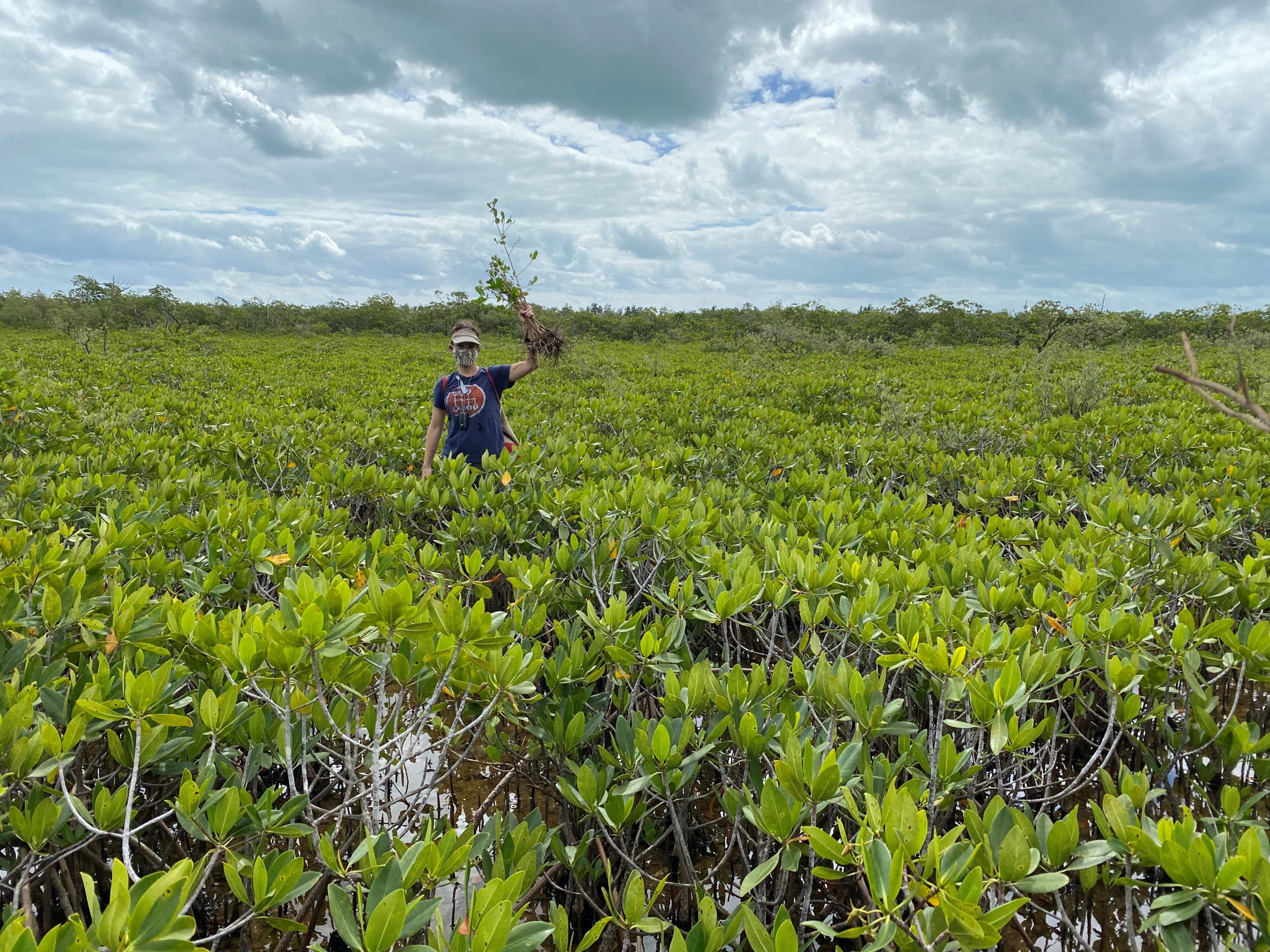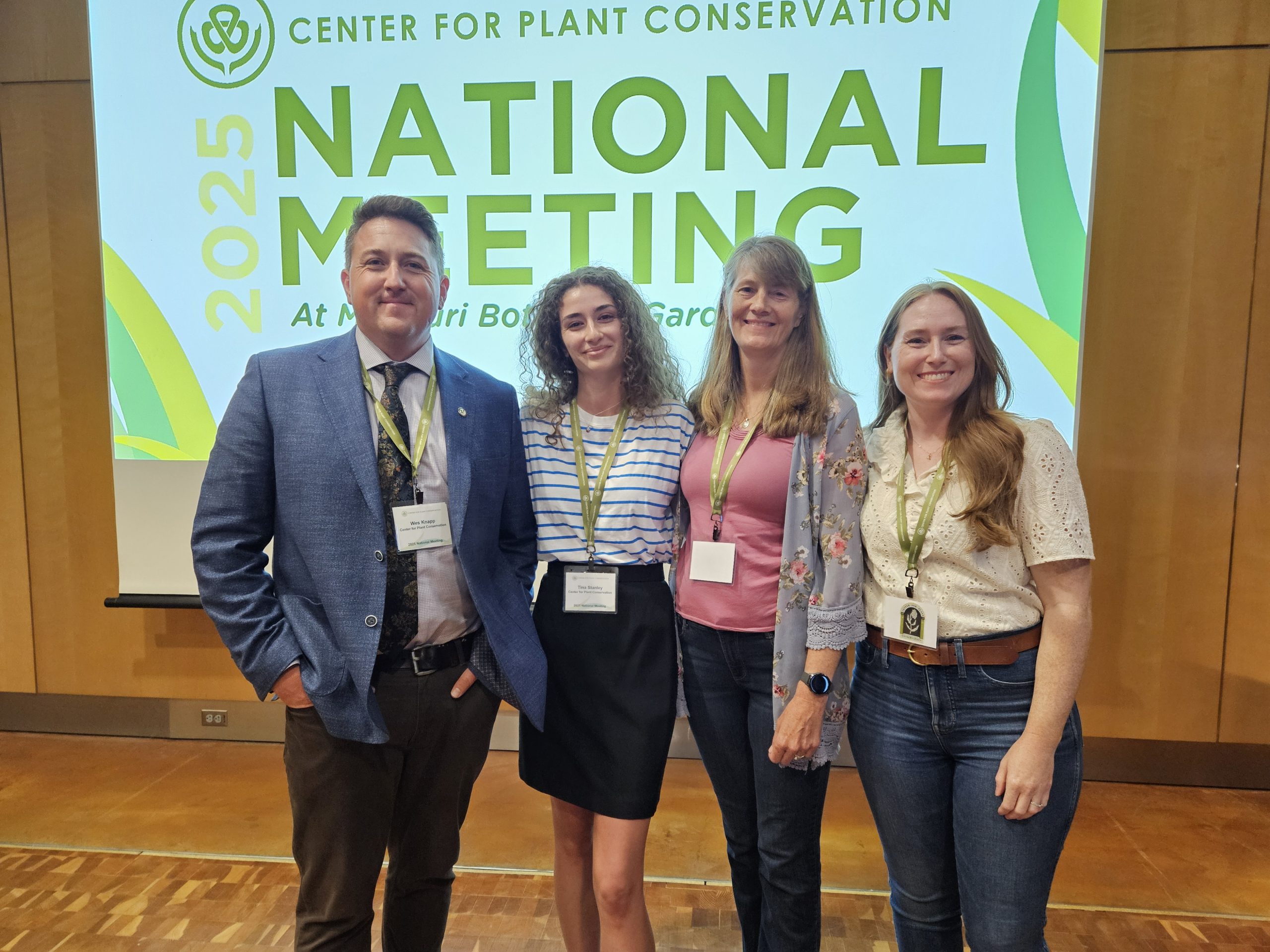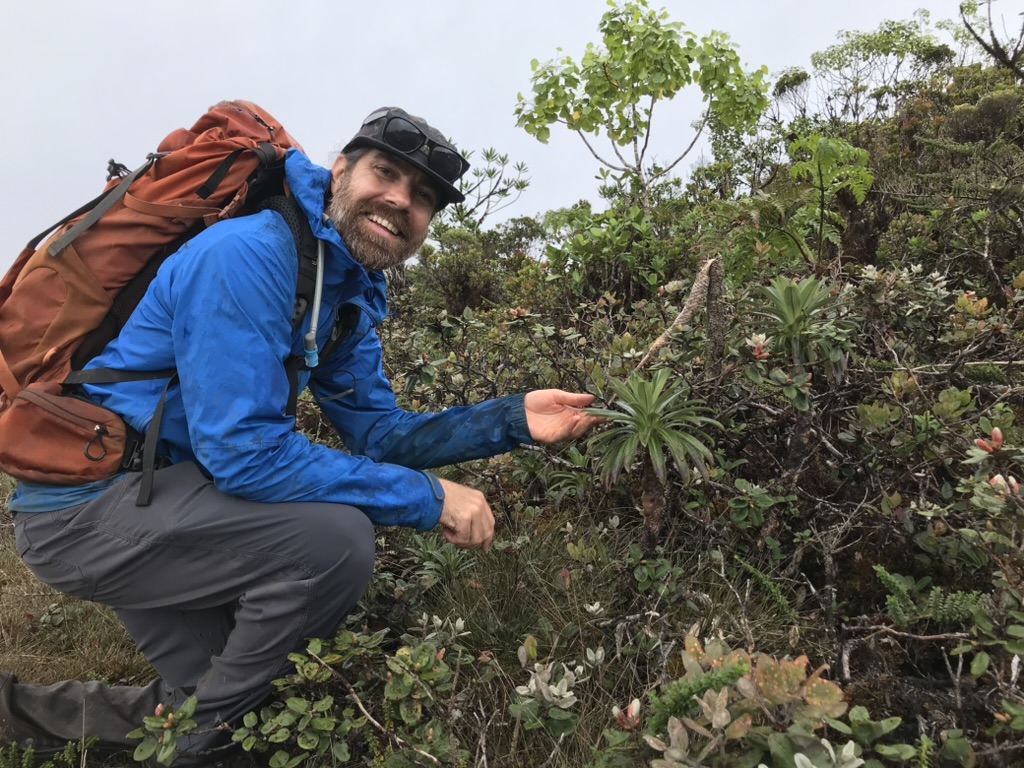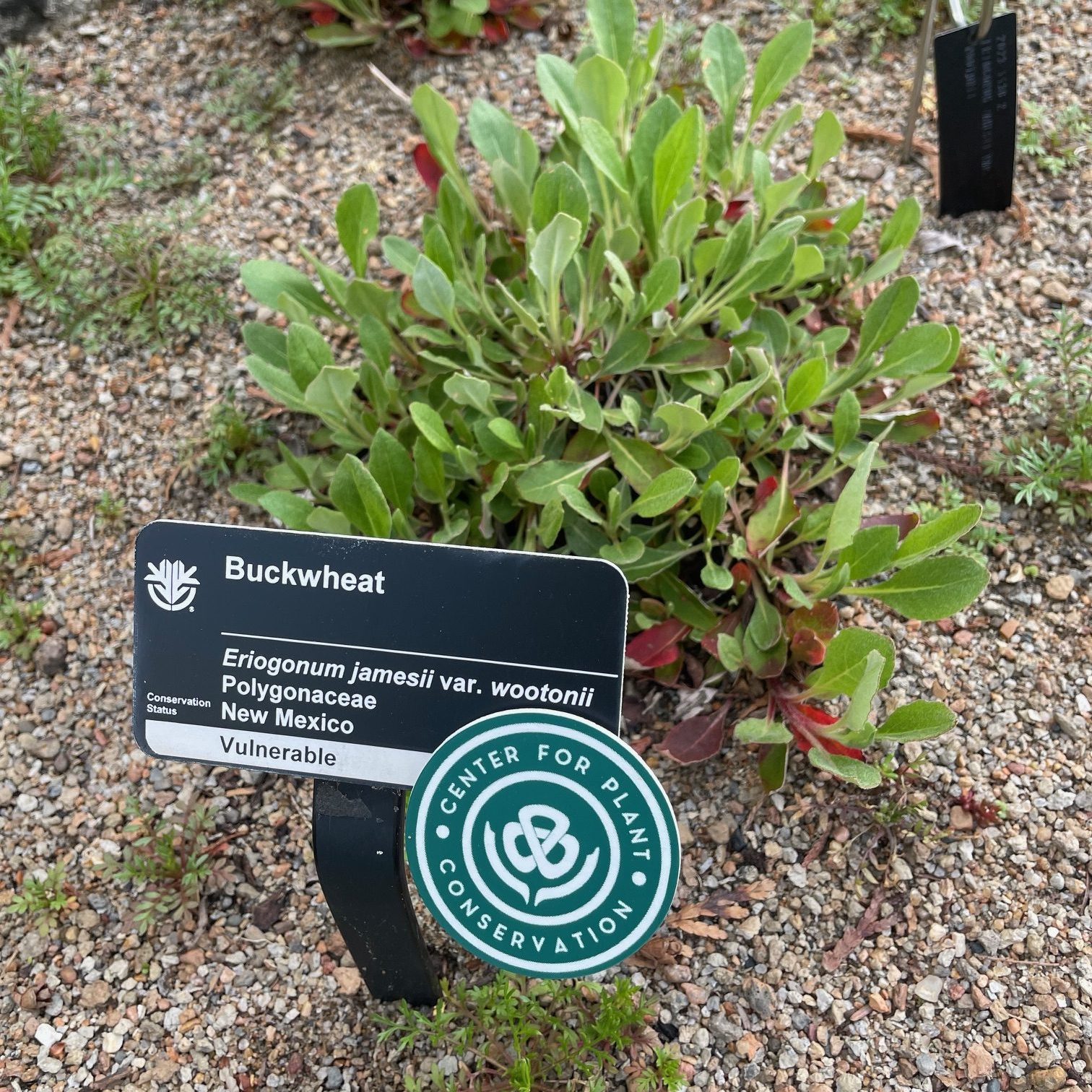Save Plants
Center for Plant Conservation
June News 2022
The CPC 2022 National Meeting was held at Denver Botanic Gardens and also encompassed a hybrid virtual version. 95 in-person and 72 online colleagues had a wonderful opportunity to see milestones of plant conservation accomplishments and to learn about the network-wide project to study seed longevity. A pre-conference visit to the National Laboratory for Genetic Resource Preservation in Ft. Collins inspired attendees and reinforced the critical function of our rare plant seed collections. Our keynote speaker, Dr. Deane Bowers, presented a compelling case for the intricate connection of plant chemistry to humans, highlighting many uses, and described how plant chemicals influence the insects that eat or pollinate them. Throughout the meeting, we shared a common theme: that acts of kindness go a long way to encourage one another and indirectly help Save Plants.
Thanks to all the speakers and attendees—virtual and in-person—for a fantastic conference!
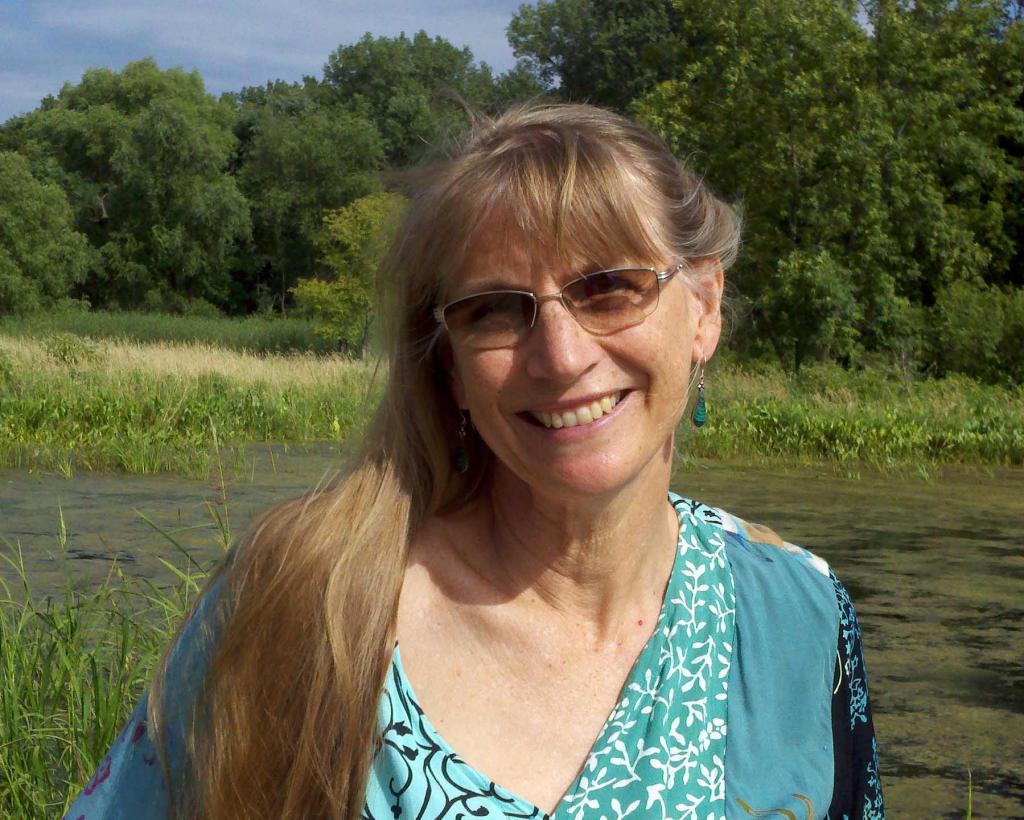
Joyce Maschinski
CPC President & CEOState of CPC: 2022 National Meeting Update
CPC President & CEO, Dr. Joyce Maschinski, and CPC staff shared exciting updates from the CPC National Office which highlighted the dynamic and collaborative conservation projects that are underway to save rare plants across our network, including:
- Growing the number of rare plant species in the National Collection with 180 new species added in 2021, raising the total number of species in the Collection to 2,208. Many of these new accessions were the result of the California Plant Rescue.
- Introducing the Florida Plant Rescue – a statewide seed collections and resiliency initiative that aims to secure and safeguard all remaining Florida rare plant species in conservation collections to prevent their extinction. To date, partners have made 8 collections of species that have never been previously seed banked and are set to make 18 more collections in the 2022 growing season.
- Collaborating with 13 PIs (and counting!) on the development of the online Applied Plant Conservation course. To date, 56 hours of content on topics such as rare plant genetics, conservation of exceptional species, seed collections, and more are under development.
- Launching new Individual Conservation Partner categories for Students, Emerging Professionals, and Plant Conservation Professionals, with the goal to broaden and grow our network in support of our shared mission to Save Plants.
- Reinvigorating the Plant Sponsorship program to support rare species in the National Collection and the teams working to conserve them.
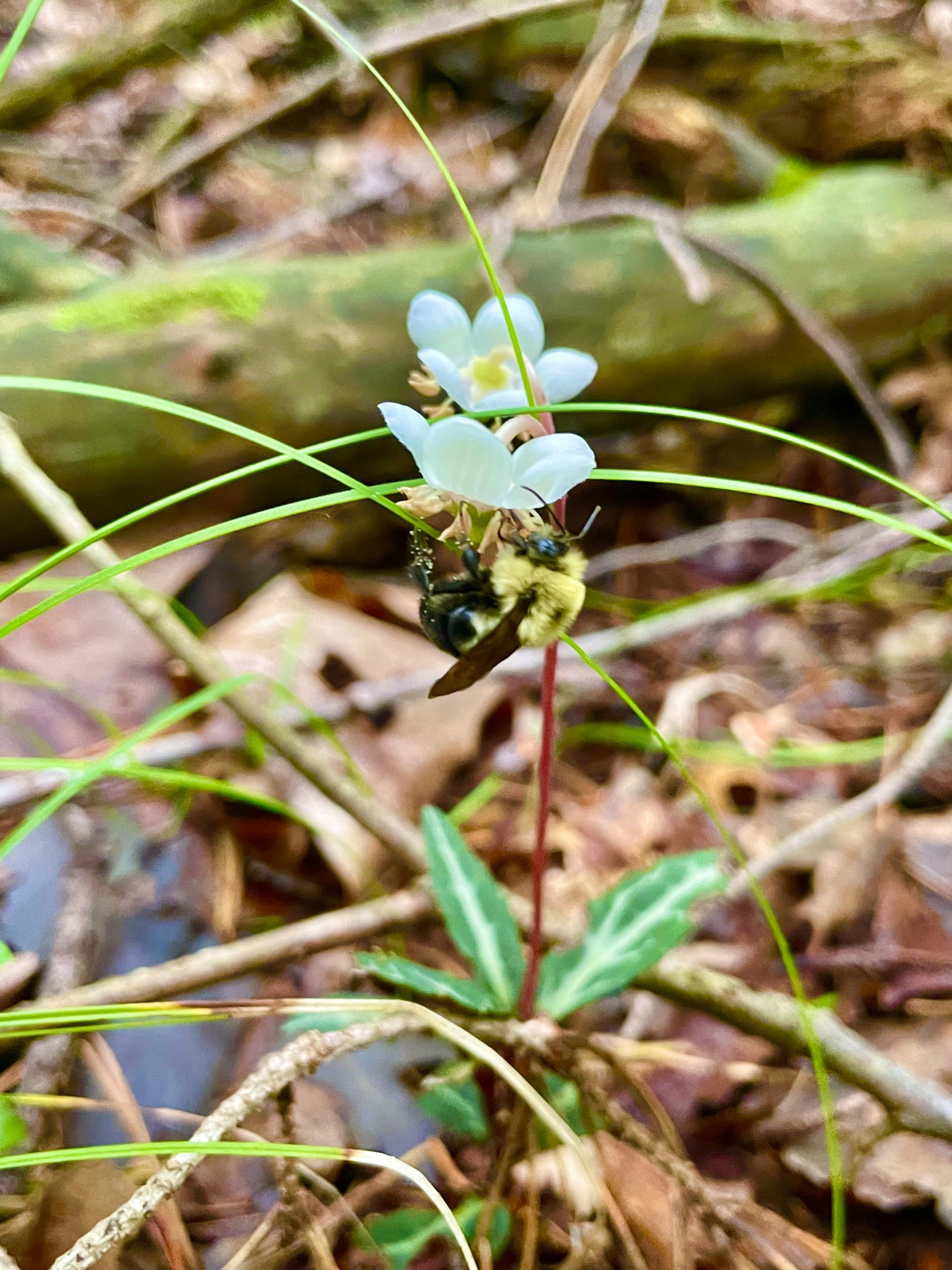
In addition to sharing program updates, we welcomed CPC’s newest team member, Office Manager Krysta Nunn, and three new Institutional Conservation Partners to the CPC network: Institute for Regional Conservation, Southeastern Grasslands Initiative, and United Plant Savers.
The 2022 National Meeting served as a welcome opportunity to share conservation milestones and connect with fellow plant conservation practitioners and partners – both in person and virtually – to exchange ideas and learn from each other in our shared mission to Save Plants from extinction.
-
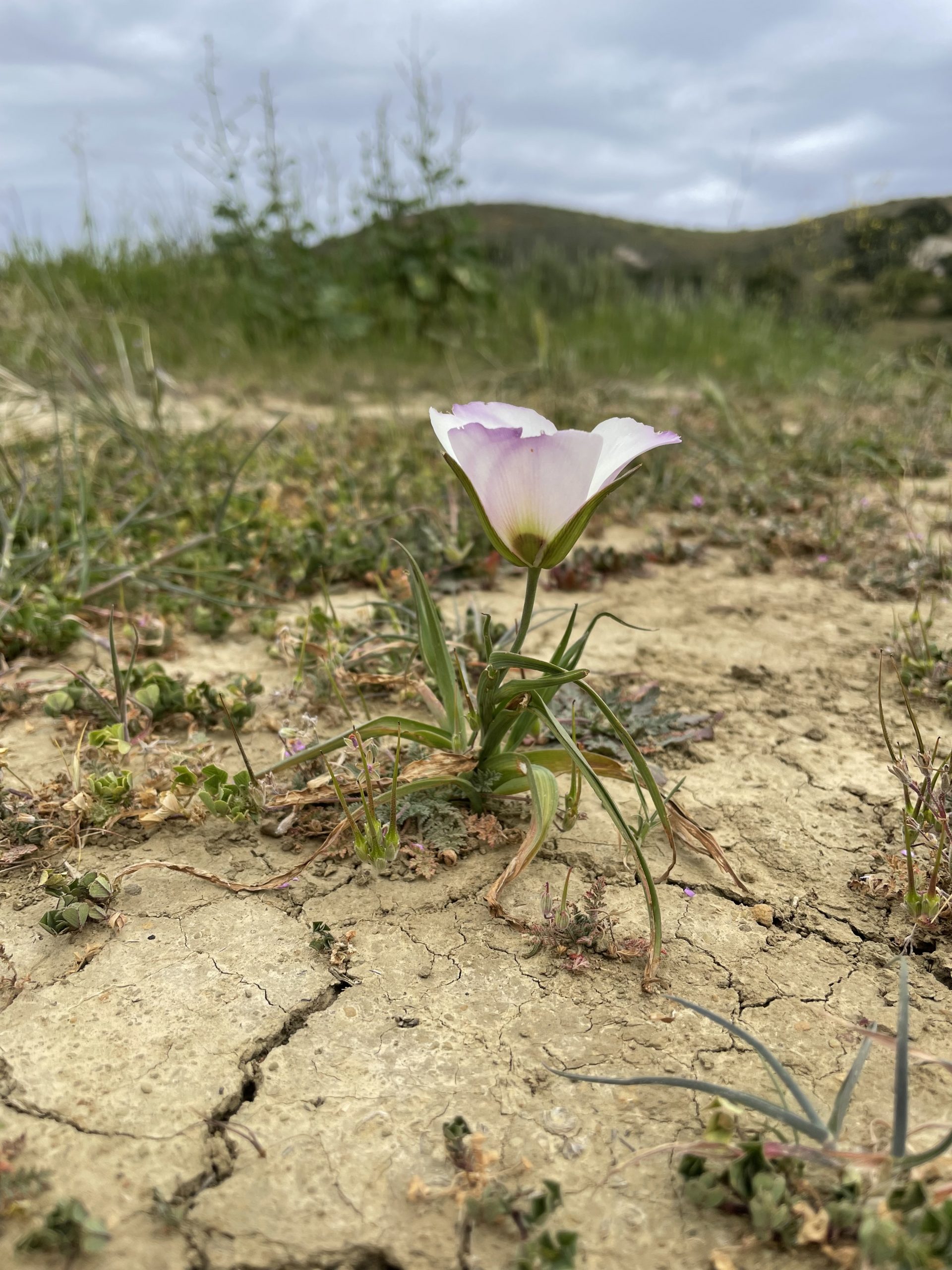
Tough little rare lily growing out of cracked earth in Santa Barbara, California. Photo by Heather Schneider. -
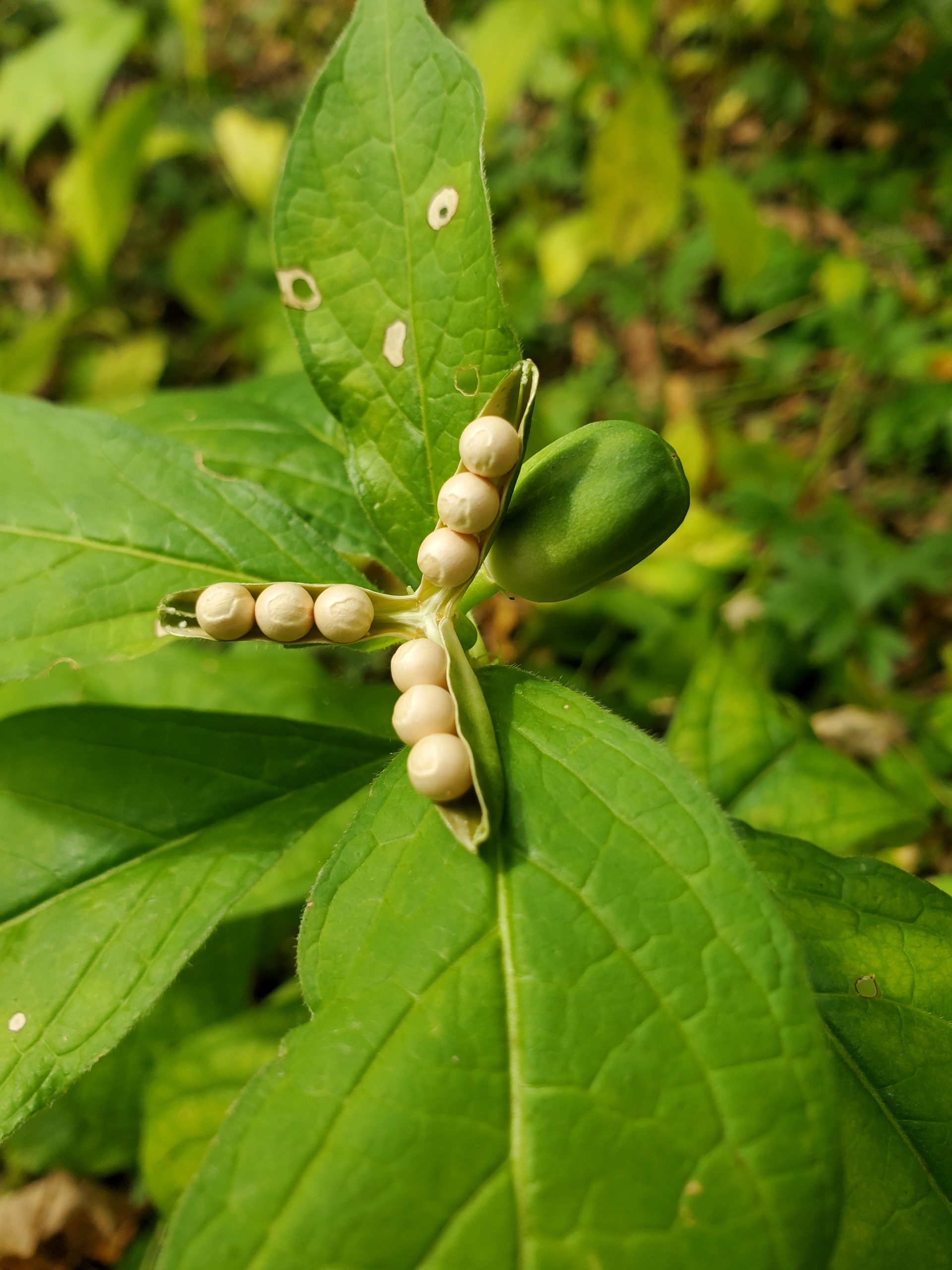
Hybanthus concolor in fruit, east-central Wisconsin. Photo by Amanda Weise. -
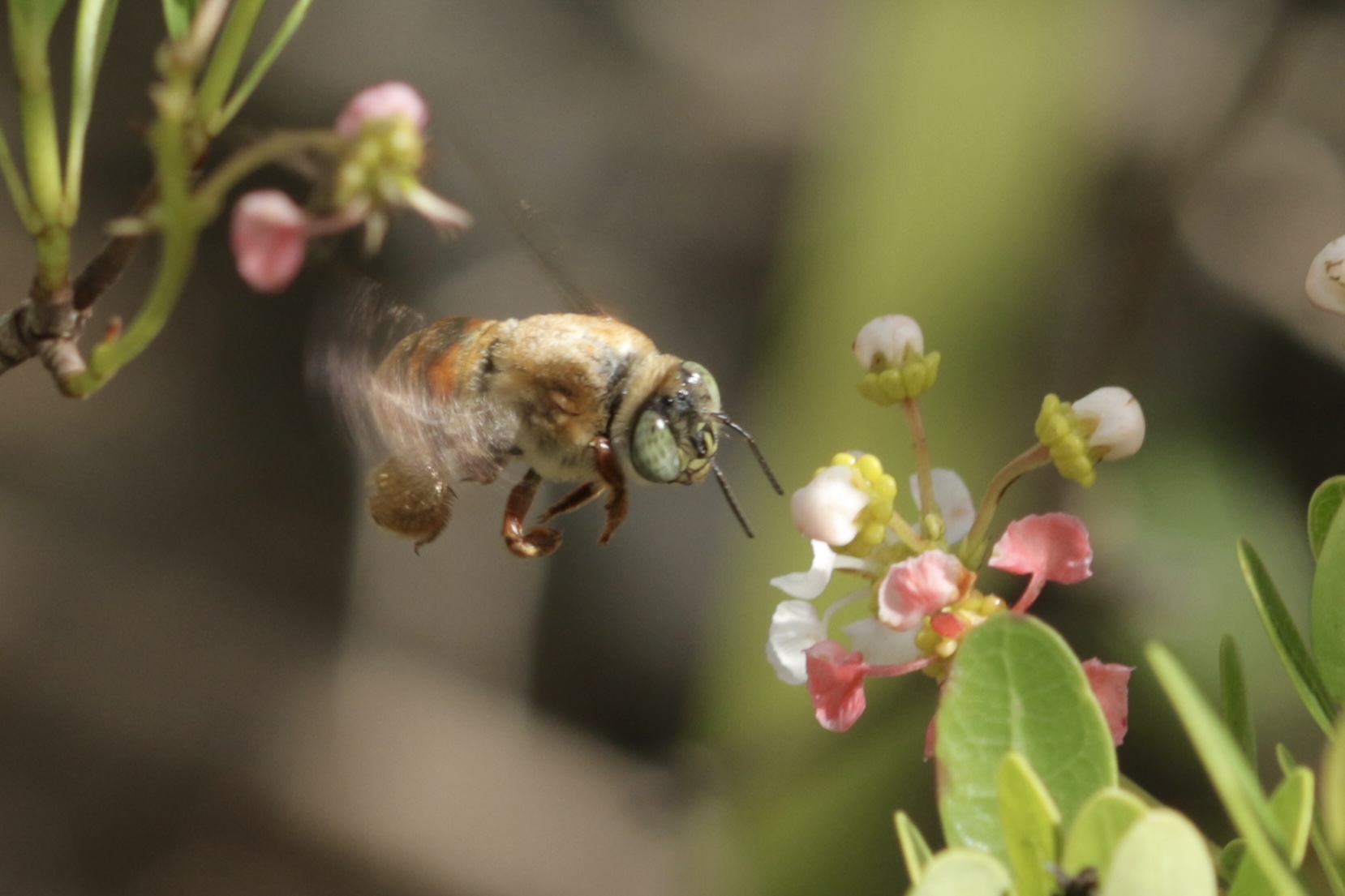
An oil-collecting Wandering Centris Bee (Centris errans) visiting flowers of Locustberry (Byrsonima lucida) in the pine rockland habitat of South Florida. Photo by Noah Frade.
2022 National Meeting Keynote Address
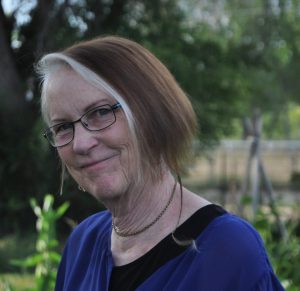
The interconnectivity and dynamic relationships between plants, humans, and insects were the focus of Dr. Deane Bower’s keynote address, “Better Living Through Plant Chemistry: People, Parasites and Pollinators.” As a Professor of Biology and the Curator of Entomology at the University of Colorado, Dr. Bower’s research interests are in the interaction of insects with plants, their environment, and their enemies. She is especially interested in the chemical mediation of plant-insect-enemy interactions, but also in the ways human alterations of the environment affect these interactions.
Her talk highlighted the array of chemical compounds produced by plants—known as natural products or secondary metabolites—which are important for the interactions of plants with other organisms. Once thought to be the waste disposal system of plants, these compounds have been used by humans for millennia in diverse ways, such as in medicines, poisons and pesticides, flavorings, and dyes. They are also important for other organisms that interact with plants, including enemies like herbivores (considered parasites of plants) and pathogens, as well as beneficial pollinators.
Dr. Bower’s presentation reinforced the importance of plants to their natural environment and also to the organisms that interact with and rely on them for various purposes – affirming the CPC network’s shared mission to conserve and safeguard these incredible plant species.
Jennifer Possley
Following an afternoon tour and reception at Denver Botanic Gardens’ Chatfield Farms, CPC presented the 2022 Star Award to Jennifer Possley, Conservation Program Manager at Fairchild Tropical Botanic Garden. Jennifer’s dedication to plants of South Florida and the Caribbean has truly saved plants from extinction. She leads a team working with over 100 rare plants in the region to bank seeds, monitor populations, research genetic relationships, and conduct reintroductions. Her work with the Connect to Protect program helps connect citizens of South Florida to the endangered pine rockland ecosystem. Known as a brilliant botanist and a caring and fun colleague, Jennifer works with a broad group of stakeholders to advance plant conservation in South Florida and the Caribbean. We sincerely appreciate her devotion and honor her contributions to plant conservation.
Congratulations on being awarded the CPC Star Award! Are there any remarks you’d like to share in response to receiving this reward?
I was certainly surprised to win the Star Award; I don’t even have a doctorate! I’m grateful to CPC for the recognition. It is especially meaningful to me to be in the company of other Star Award winners, many of whom I have admired for years.
What has it meant to you to be a member of the CPC network? How has CPC supported your work?
I think it all boils down to three things. First, CPC is a guiding voice for our on-the-ground conservation work, setting the standards for the work we do, based on the excellent science coming out of NLGRP, MoBot, CREW, and other institutions. Second, CPC has been a reliable and much-appreciated source of financial support, paying us to do the kind of work that we want to be doing anyway (Seed collecting! Outreach!) without mountains of red tape, for which we are so grateful. And third, CPC is moral support. Many of us are housed within institutions where conservation is not part of the mission statement, yet through CPC we are part of this amazing network that understands our needs and works to make our jobs easier. We love you guys!
Read more about Jennifer and her work to Save Plants in her Conservation Champion feature.
Introducing CPC’s Interim President & CEO: Dr. Damon Waitt
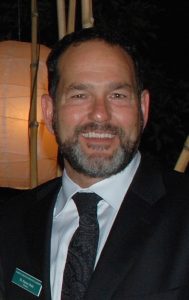
With CPC President & CEO, Dr. Joyce Maschinski’s upcoming retirement on July 1, 2022, this year’s National Meeting served as an opportunity to celebrate Joyce’s conservation milestones made throughout her career, and also to introduce Dr. Damon Waitt as CPC’s Interim President & CEO.
Damon is Director of the North Carolina Botanical Garden (NCBG) and Professor of the Practice in Biology at the University of North Carolina at Chapel Hill. As Director of NCBG, Damon has broad responsibility for overall leadership and management of the Garden and for ensuring that the Garden fulfills its mission—to inspire understanding, appreciation, and conservation of plants and to advance a sustainable relationship between people and nature. Damon came to the North Carolina Botanical Garden from the Lady Bird Wildflower Center in Austin, Texas, where he served as Senior Director and Botanist from 2001-2015. Damon currently serves on CPC’s Board of Trustees. He has also served on the Invasive Species Advisory Committee of the National Invasive Species Council, as President of the Texas Academy of Science and the Texas Invasive Plant and Pest Council, and as board chair of North Carolina’s Plant Conservation Program. Damon holds a Ph.D. in Botany from the University of Texas in Austin, an M.S in Botany from Louisiana State University Baton Rouge, and a B.S. in Biology from Tulane University.
As a long-standing collaborator with the CPC network and a CPC Trustee, Damon brings a commitment to plant conservation and CPC’s mission—as well as a welcome sense of continuity—during this transition. Damon will work closely with CPC National Office staff and Board of Trustees as a search is launched to fill the permanent role of CPC President & CEO.
National Meeting Photo Contest
Incredible snapshots of rare plants, teams in the field, and beautiful habitats took center stage at the 3rd Annual National Meeting Photo Contest. Entries were received from across the CPC network. Joe DeWolf (Conservation Specialist, San Diego Botanic Garden) took first place with a stunning close-up image of Ocotillo (Fouquieria splendens) pushing new growth in the Anza Borrego Desert.
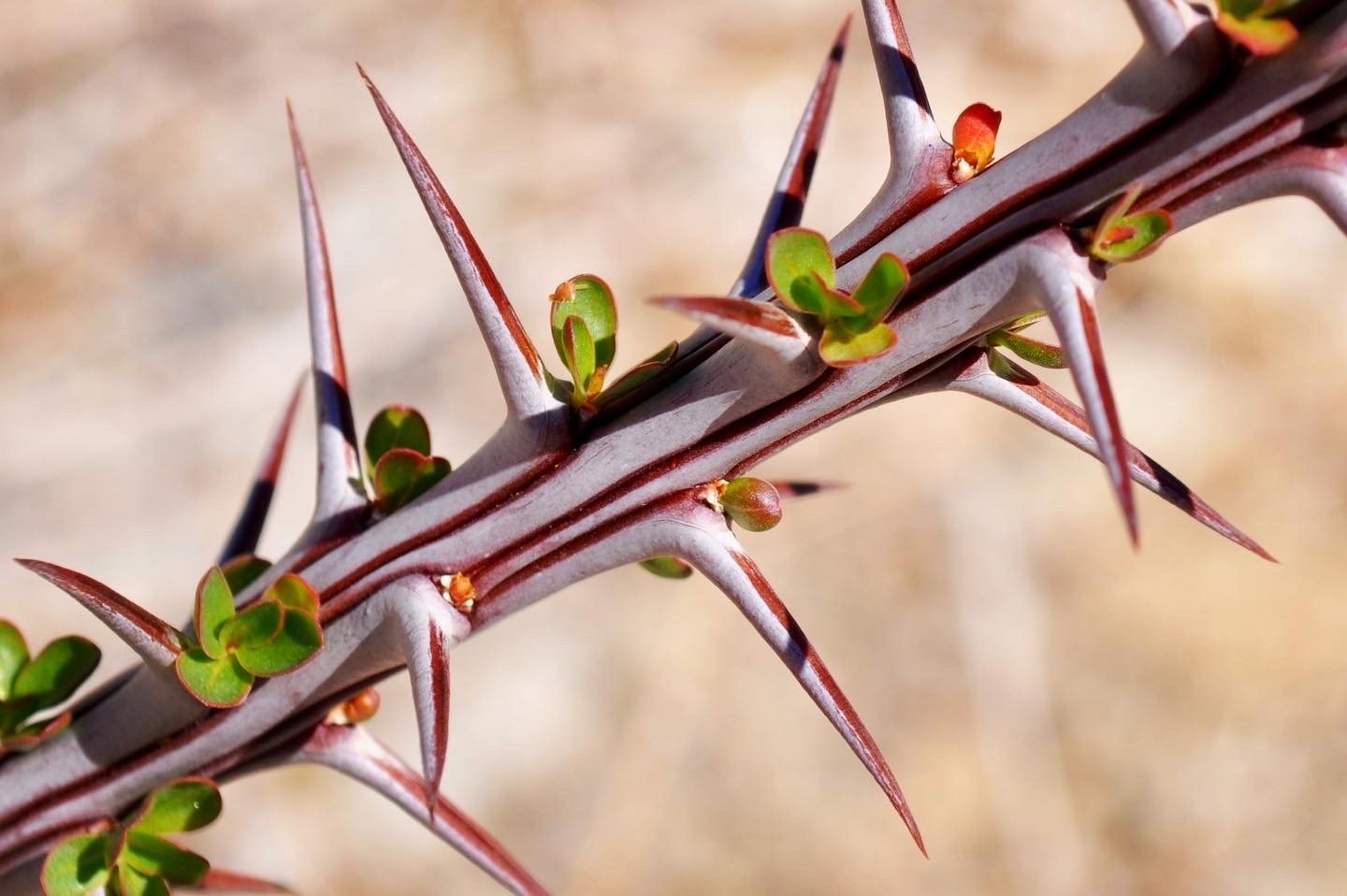
Second place was awarded to Meg Engelhardt (Seed Bank Manager, Missouri Botanical Garden) for a photo that features Meg getting a close-up look at the very tiny federally endangered Geocarpon minimum.
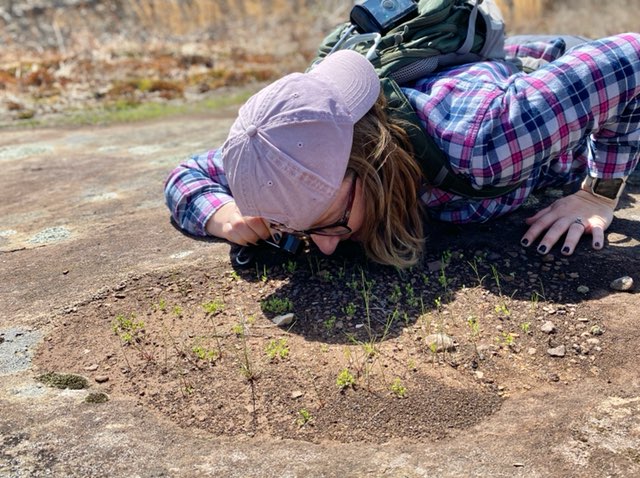
Third place went to Rachel Sadowski (Conservation Specialist II, San Diego Botanic Garden) for her image of Clematis lasiantha climbing through a steep canyon in San Diego County’s Otay Mountain Wilderness.
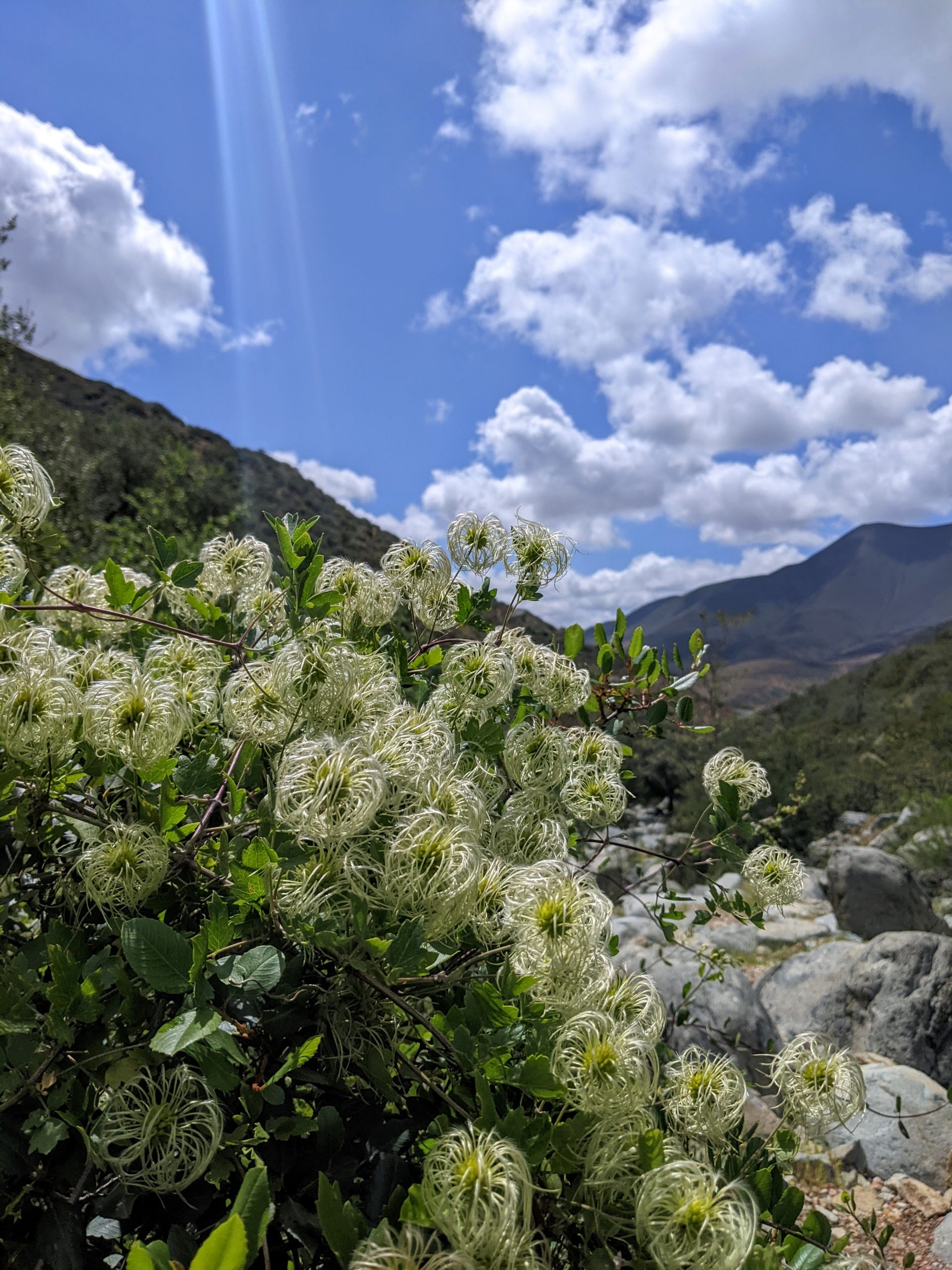
Congratulations to our Photo Contest winners, and thank you to everyone who participated!
-
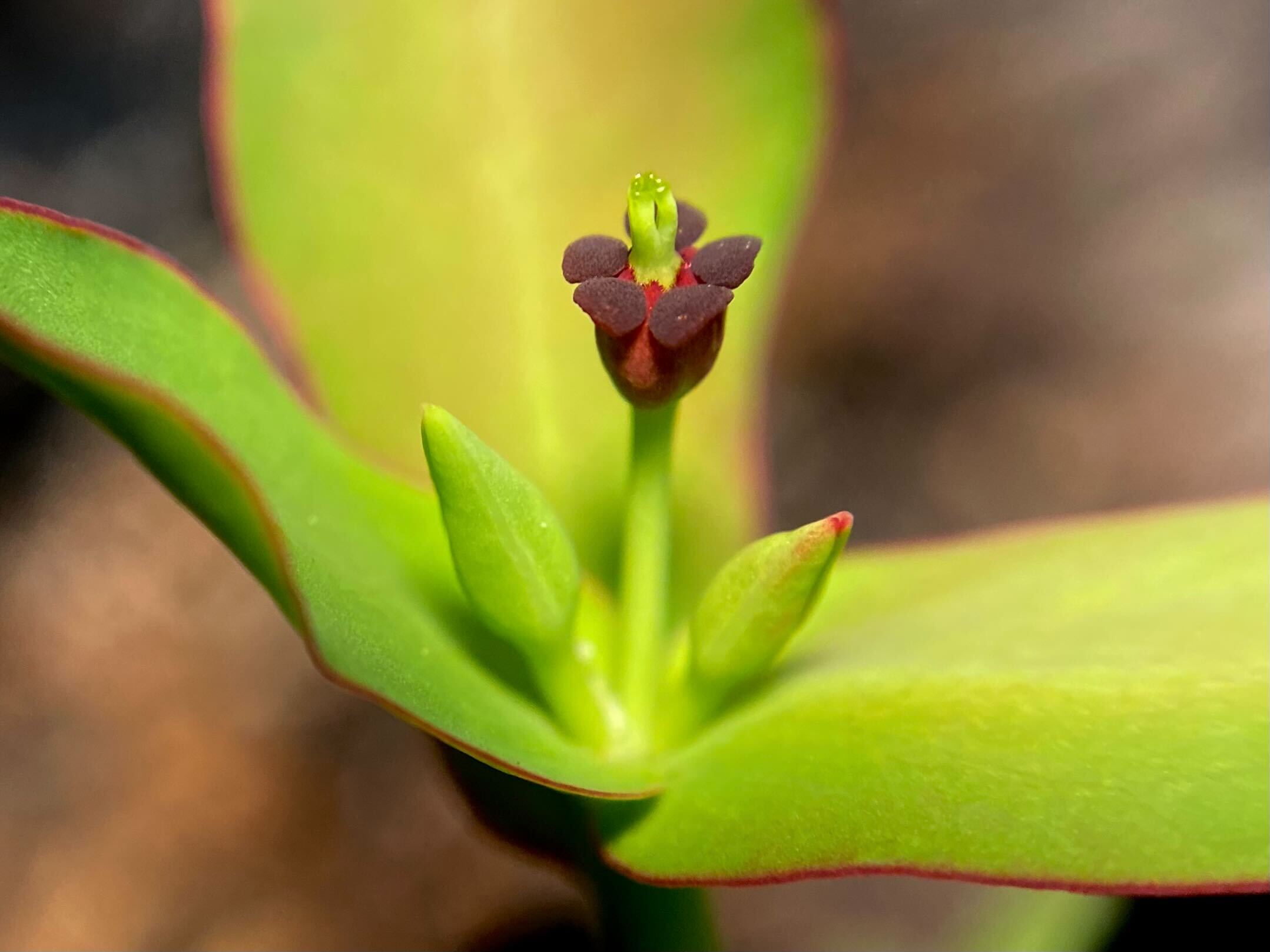
Euphorbia telephioides recently removed from wild population in imminent threat. -
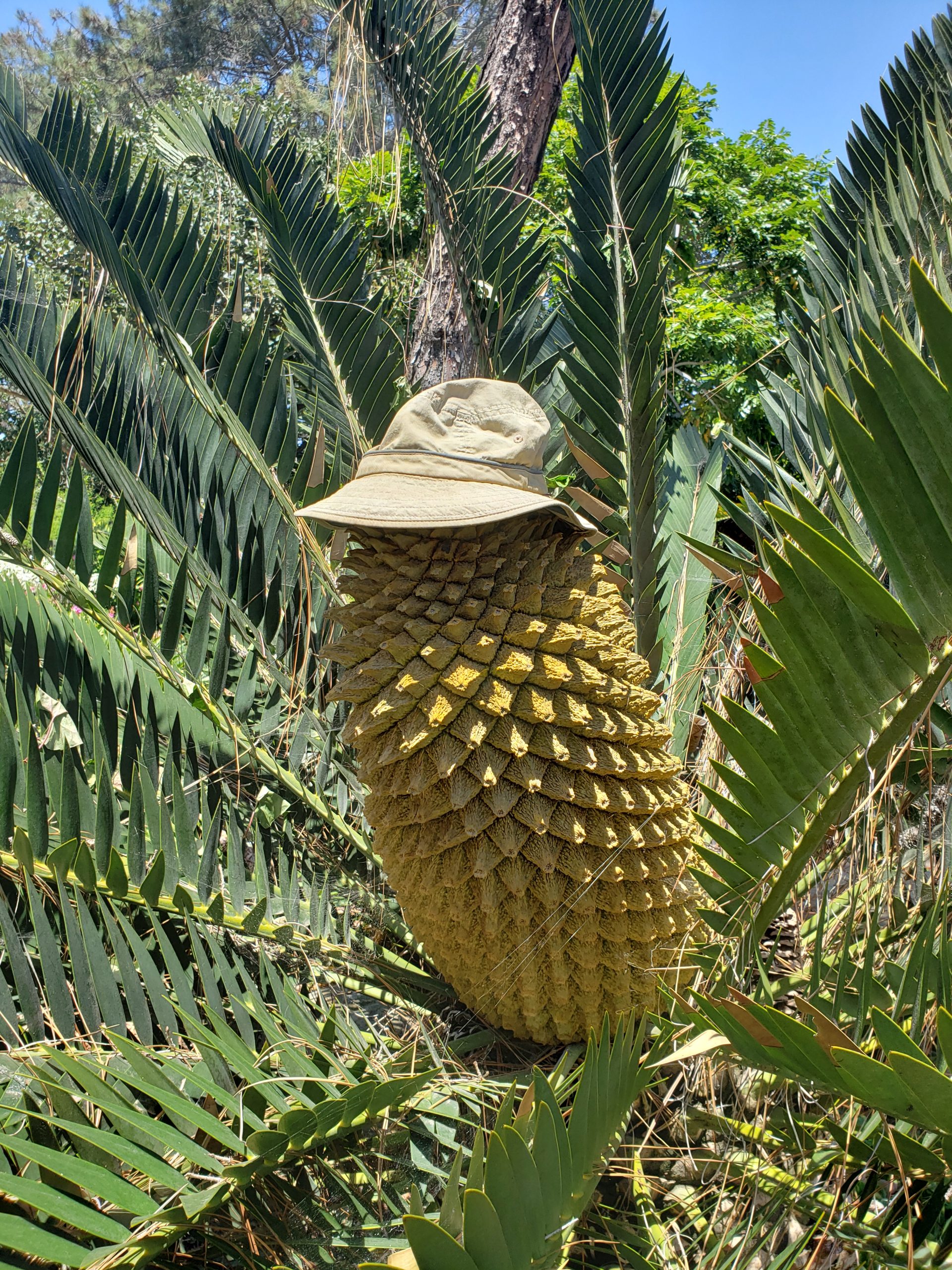
Harvesting seed from an Encephalartos longifolius at the San Diego Botanic Garden. Hat for scale. Photo by Jeremy Bugarchich. -
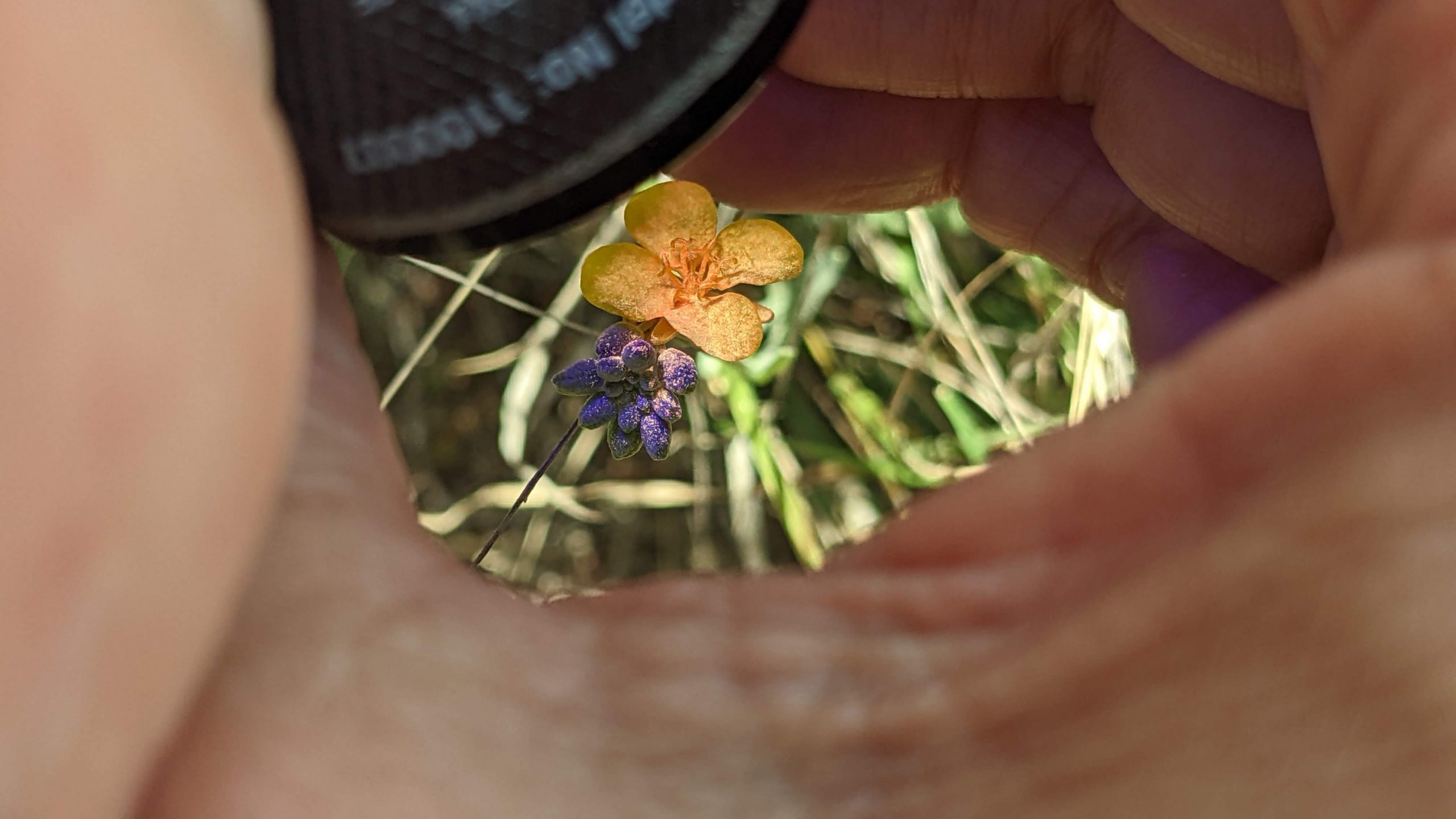
Fluorescent dye testing with the rare Texas endemic Zapata Bladderpod, Physaria thamnophila. Photo by Sara Johnson.
Reintroducing the CPC Reintroduction Registry
Translocation of rare plants into the wild is one of the most logistically difficult and time-intensive actions that plant conservationists undertake. Sometimes referred to as rare plant “reintroduction,” it typically requires a full spectrum of conservation actions: collection of seed from the wild, propagation of plants in a garden setting, site preparation prior to planting, installation of propagules, and site maintenance and monitoring to ensure survival and establishment of plants. Yet despite the incredible amount of work required and knowledge gained with each project, translocation details or outcomes are often buried in reports that can be difficult for future practitioners to access. This lost knowledge puts our community at risk of repeating mistakes for rare species—species that have little time to waste.
The CPC Reintroduction Registry, newly re-launched on SavePlants.org ahead of our National Meeting in May 2022, makes it easier to find invaluable records and contacts for reintroduction projects. The registry—a concise list of rare plant reintroduction projects—is sortable by species, lead institution, or state, and it provides links to relevant peer-reviewed and non-reviewed “grey” literature. This is the first step in revitalizing an important older network resource: CPC’s International Reintroduction Registry (IRR), created in 2009 by Dr. Ed Guerrant, formerly of Rae Selling Berry Seed Bank and Botanic Garden, and Dr. Joyce Maschinski, President & CEO of CPC. The new registry also contains information from willing contributors to the REDCap Reintroduction Database for US Rare Plants, compiled by Matthew Albrecht and collaborators at Missouri Botanical Garden. Our goal is to make the full database records from these assets available online by the end of 2022, including detailed assessments of reintroduction design, treatments, and outcomes. To protect rare plant location information and project details, data access will be restricted to individual database contributors and CPC National Office Staff.

The need for this registry was identified through strategic planning for the future of CPC’s reintroduction database, initiated in 2021. CPC contracted postdoctoral research fellow Dr. Joe Bellis, a recent graduate of Liverpool John Moores University, to evaluate the assets of the CPC IRR and the REDCap database and to chart a future for these assets within our network. This process identified the need for a new product that incorporates both databases and includes data fields designed for collaborative research. This will helps researchers to identify and extract data to improve the CPC Best Practice Guidelines on Reintroduction & Translocation.
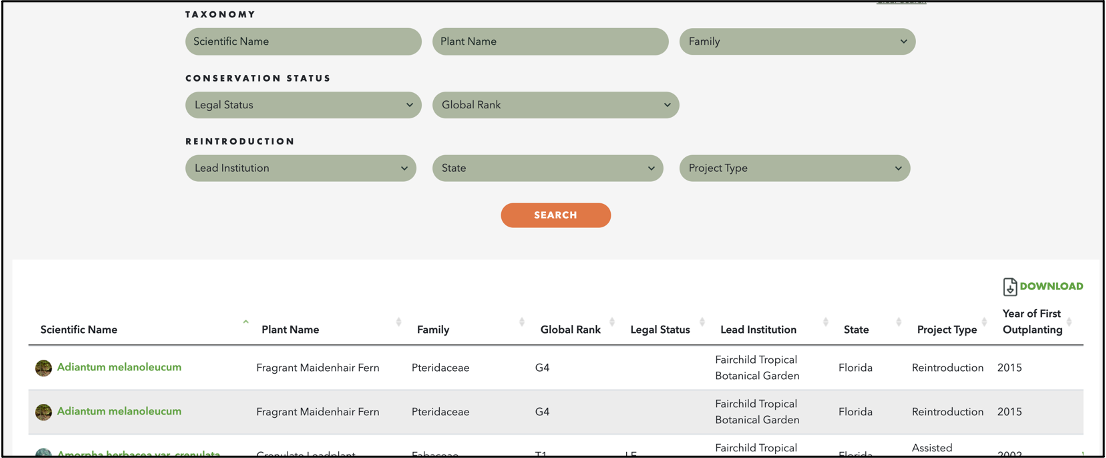
Watch Joe’s presentation from the 2022 CPC National Meeting to learn more about the history of the registry and Joe’s plans for a meta-analysis evaluating effects of climate on rare plant translocation outcomes. If you would like to share records for the registry or meta-analysis, please contact Dr. Joe Bellis at jbellis@saveplants.org.
RIN-vigorating Frozen Plants: Early Results from CPC’s Seed Longevity Study Exploring Germination and RNA Integrity (RIN)
An Enduring Collaboration
State-of-the-art seed storage methods are the foundation of biodiversity conservation for wild rare plant species, as well as global food security for crop species and their wild relatives. CPC and our partners at the USDA-National Laboratory for Genetic Resources Preservation (NLGRP) in Fort Collins, CO, have a strong shared interest in determining the best methods to preserve seeds for long term storage and to monitor the health of plant collections. The storage vault at NLGRP holds hundreds of accessions of rare plants in CPC’s National Collection, as a result of our Material Transfer Research Agreement. In 2020, IMLS awarded a National Leadership Grant to CPC that funds a collaboration with NLGRP and our network of Conservation Partners to evaluate the usefulness of RNA Integrity (RIN) as a biochemical indicator for seed health in storage.
Visiting the Vault
At our 2022 National Meeting, Conservation Officers from the CPC network and the CPC Board of Trustees had an exceptional opportunity to visit NLGRP’s one-of-a-kind science and germplasm preservation facilities. The tour included a brief but exciting dip into the -18 C constant-temperature environment of the USDA seed vault—an enormous walk-in freezer housing millions of agricultural seeds from all over the world. NLGRP staff led breakout groups with the conservation officers to discuss specific topics, including preservation of clonal tissues, RNA integrity extraction, liquid nitrogen handling, storage of fern spores and exceptional seeds, and dormancy-breaking techniques for germination trials. Many of our network members were thrilled to see for the first time the destination of the conservation seed collections they so carefully prepare and send for safety duplication.
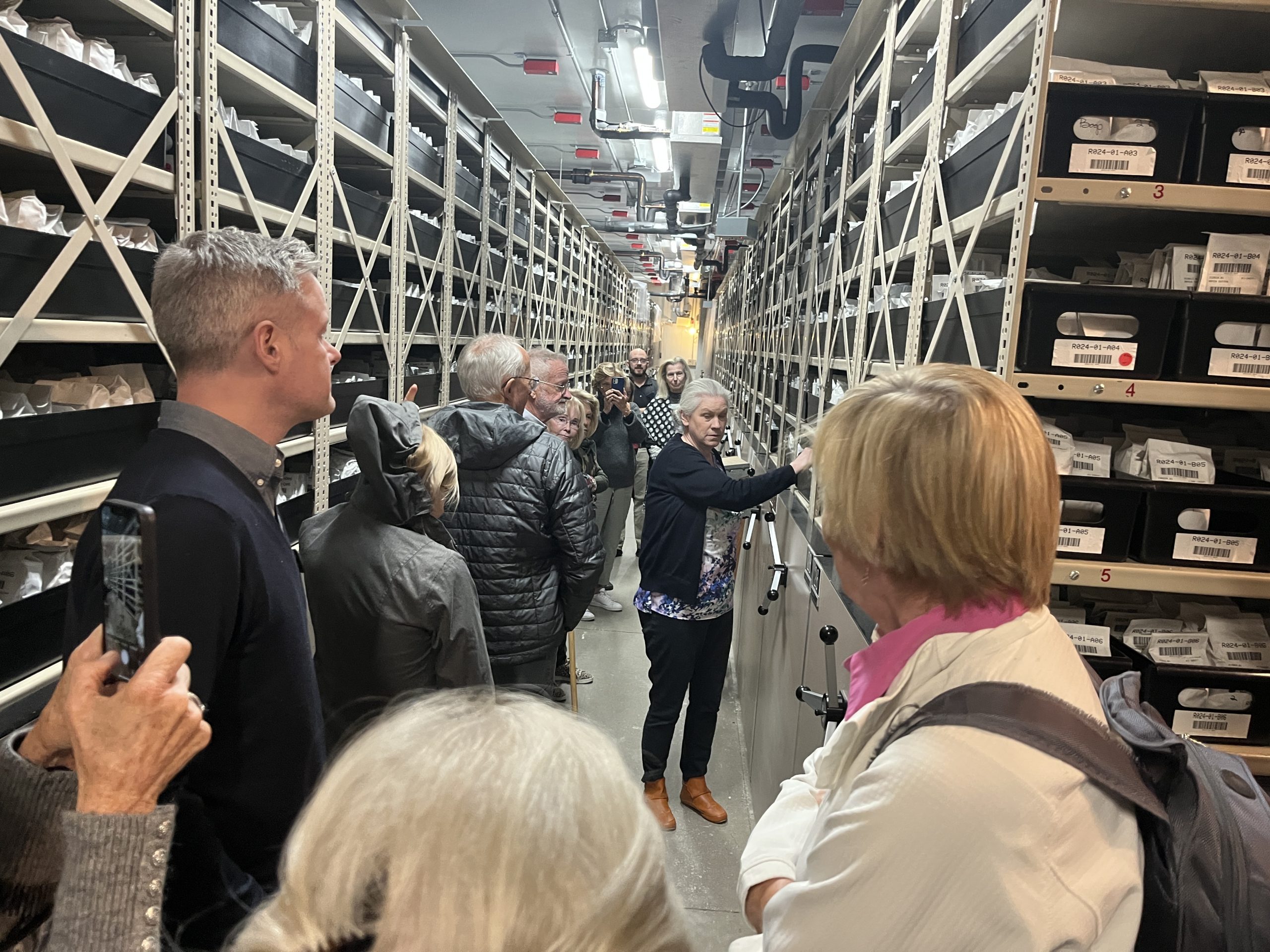
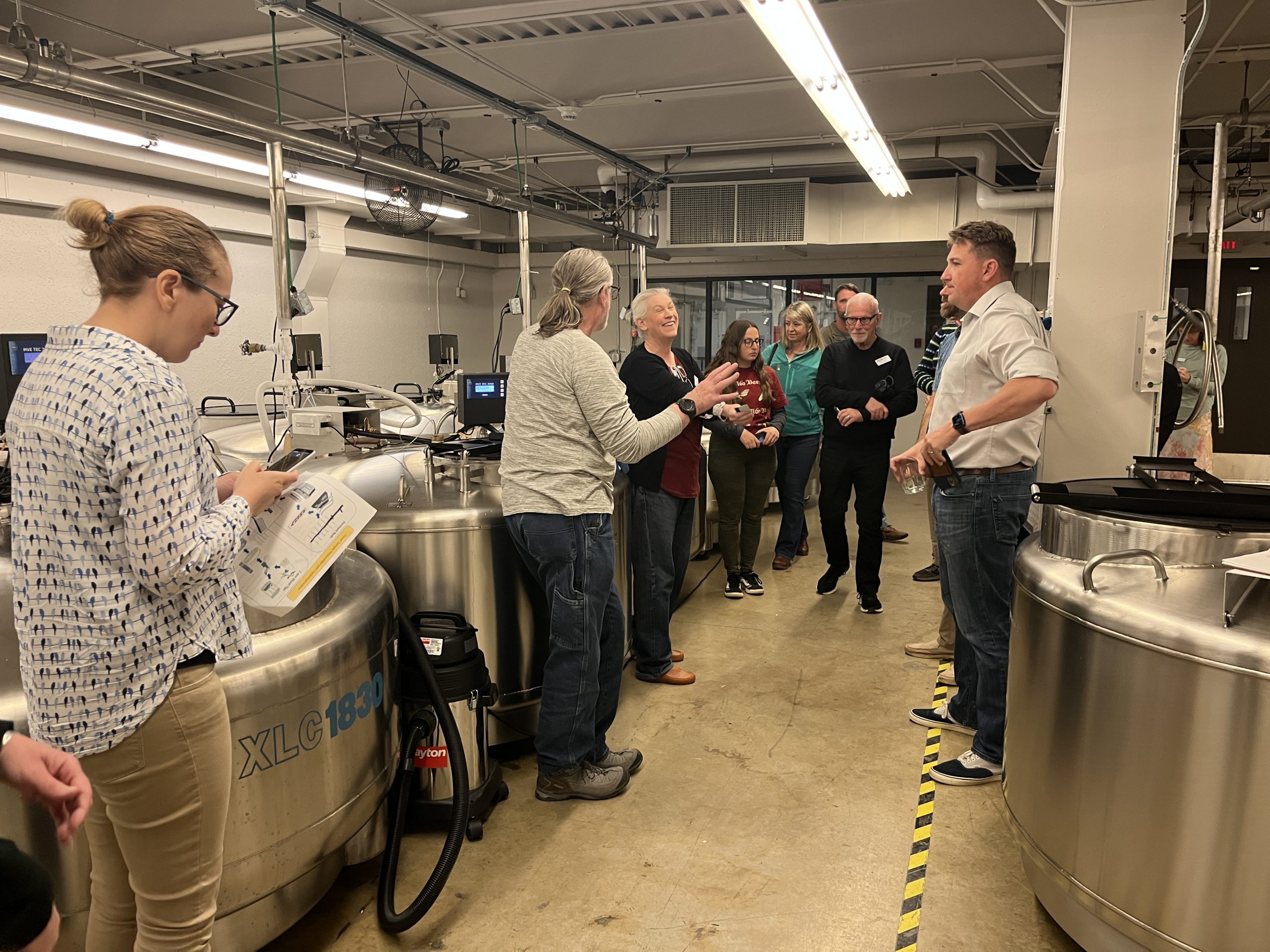
Early Results
During the CPC National Meeting session at Denver Botanic Gardens, Dr. Chris Walters shared her early interpretation of the preliminary RIN project data. Comparing germination rates of freshly collected seed versus long-term frozen seed, she found substantial variation in the loss of germination following freezing—indicating that wild rare species vary widely in their innate ability to survive in seed storage. Dr. Walters identified three interesting types of storage behaviors in the study species. In species with long-lived seeds, the germination of newly collected seeds is roughly equivalent to those stored for 15 years or more in frozen collection. Other species have short-lived seeds that lose more than half of their germination-based viability while in storage. In the third group of species, seeds with dormancy loss demonstrate higher germination rates following long-term freezing compared to freshly collected seeds—perhaps because dormancy has been reduced in frozen storage. In her initial evaluation of the new RIN metric of seed health, Dr. Walters reported that freshly collected seed had high RNA integrity regardless of germination rate. This result indicates that collectors are sending high-quality seeds. It also highlights the difficulty in comparing germination across species with vastly different dormancy types. In the preliminary data, RIN was lower on average in long-term frozen seed than in freshly collected seed, but robust analysis of this metric will require RNA extraction and testing from more species for both newly collected and long-term stored seeds.
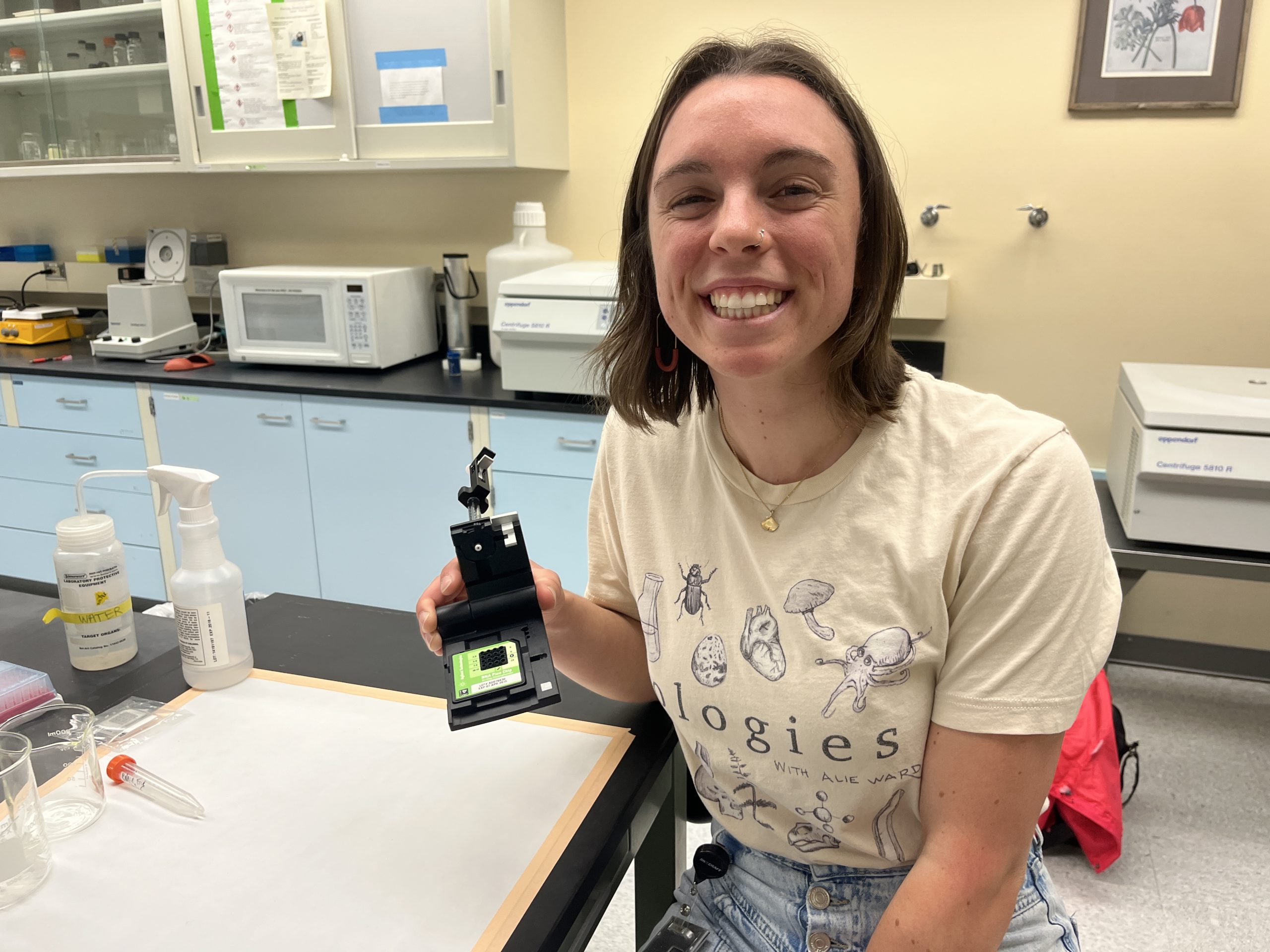
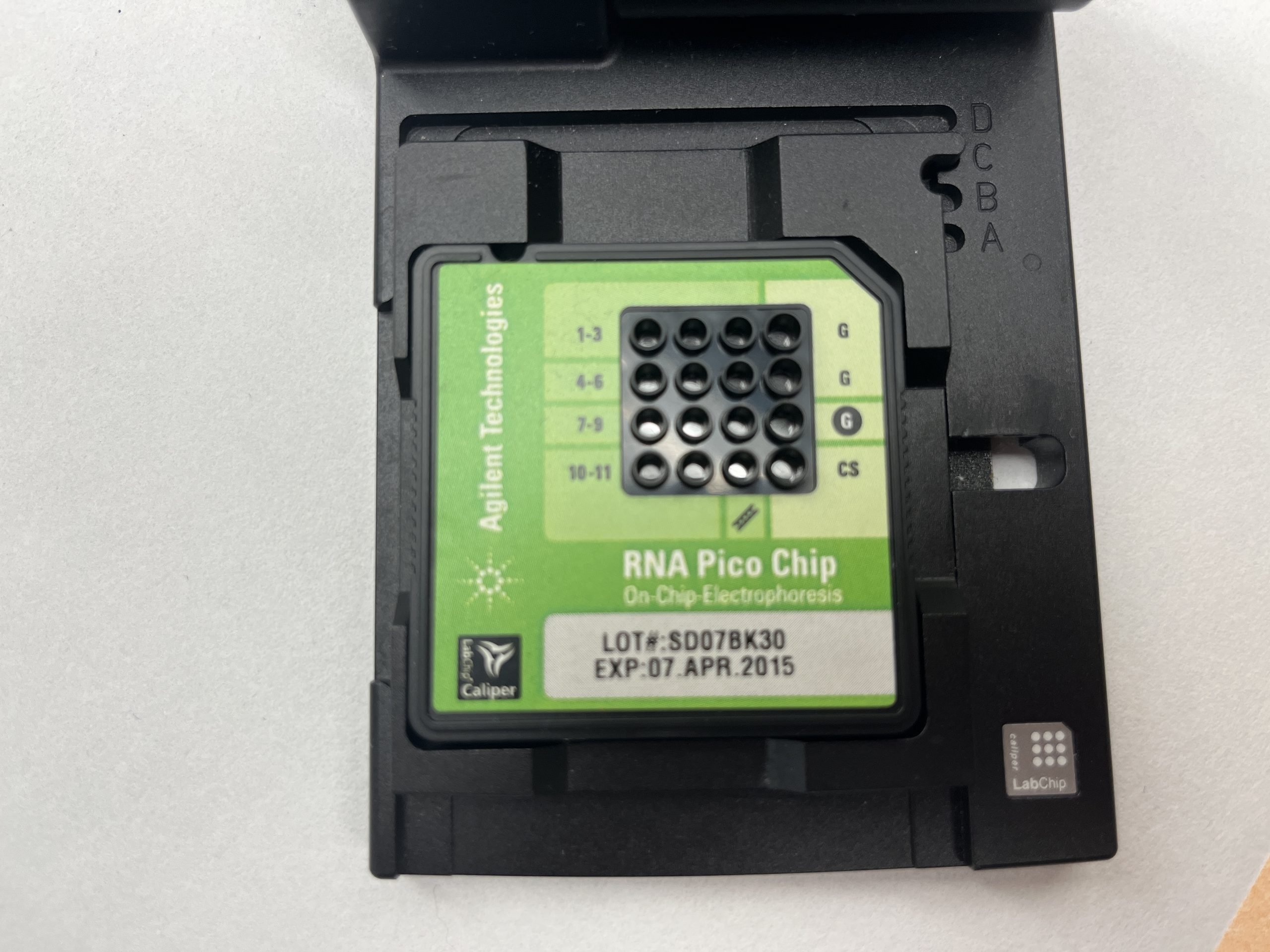
More Work to Do!
While continuing to measure RNA integrity and germination in the study species, Dr. Walters and her team at NLGRP will also begin “simulated aging” experiments—evaluating RIN and germination in a subset of species at numerous time points and elevated temperatures. This summer, Dr. Katie Heineman from the CPC National Office will follow up with conservation officers to learn about their collection plans and retrieve any additional study species’ germination records that may inform germination testing strategies at NLGRP. CPC Summer Fellow Eduardo Charvel will compile a comprehensive set of life history traits for use in a predictive computer model, which will evaluate whether particular traits can predict declines in germination rate and RIN estimates of seed health for wild rare plant species. Eduardo is hoping to report back on his project at the end of the summer, so stay tuned!
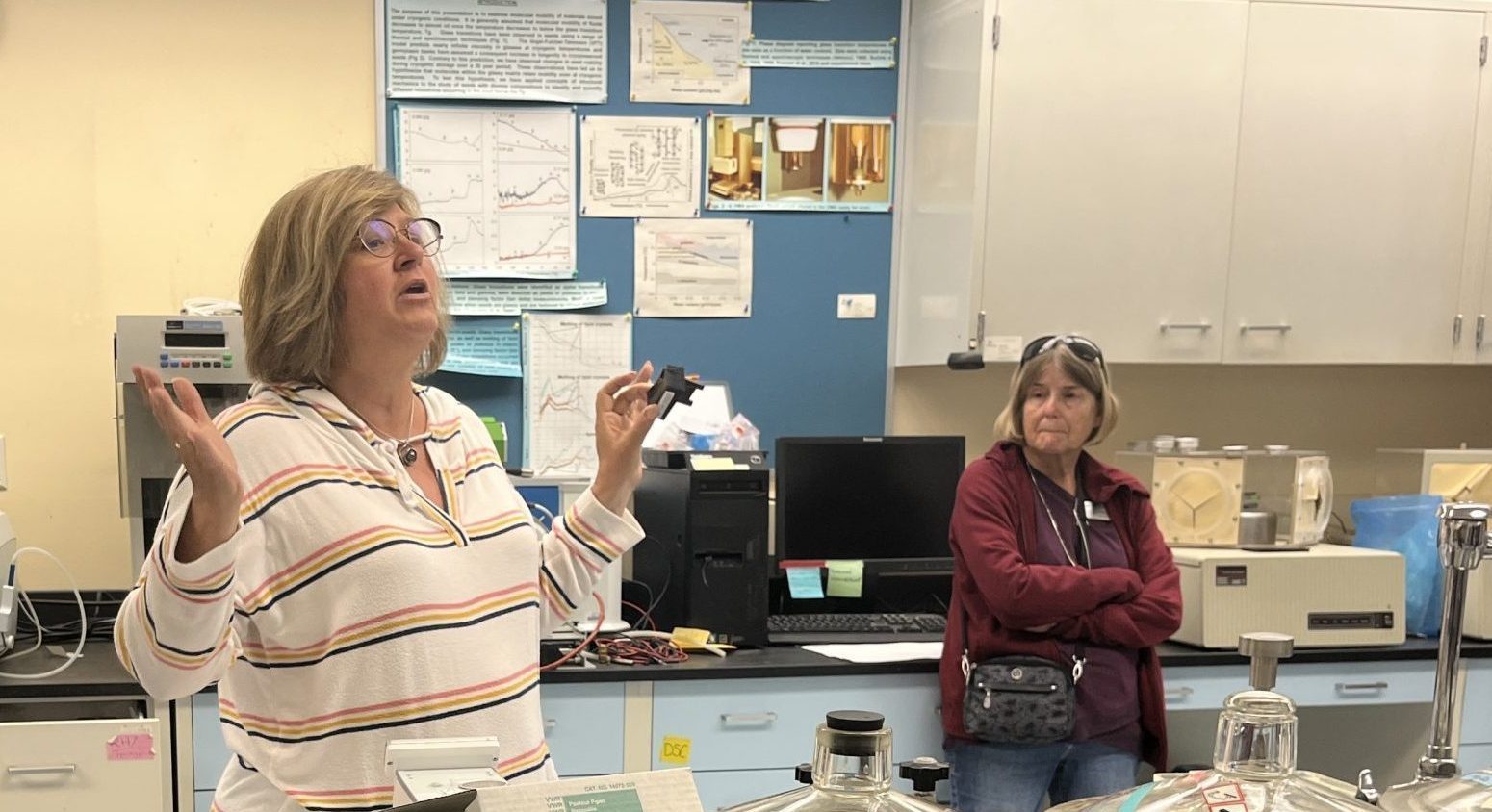
National Collection Spotlight: Gierisch’s Globemallow
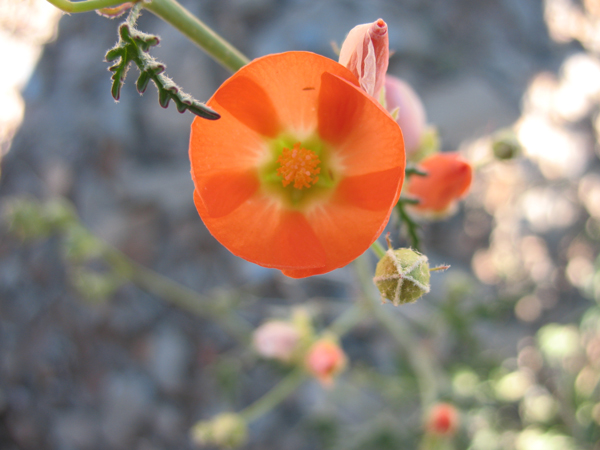
The Gierisch’s globemallow (Sphaeralcea gierischii) is a federally endangered perennial forb that can grow up to 100 centimeters tall, producing eye-catching, bright orange flowers along woody, dark reddish-purple stems. This species is endemic to a small area straddling the Utah-Arizona state line, in northwestern Mohave County, AZ, and closely adjacent Washington County, UT. It grows on low terraces abundant with gypsum-containing biological soil crust substrate, around 1,090 meters in elevation.
Five occurrences of this species are known: four in Arizona and one in Utah. The two largest occurrences in Arizona represent over 90% of the total population. Both of these occurrences are threatened by active gypsum mining operations, which can completely destroy the plant’s habitat. The Utah occurrence is threatened by increasing OHV use, illegal dumping, and impacts associated with target shooting.
Gierisch’s globemallow is secured and stewarded by CPC Participating Institution, Red Butte Garden. Learn more about this endangered species on its National Collection Plant Profile and support its conservation with a Plant Sponsorship.
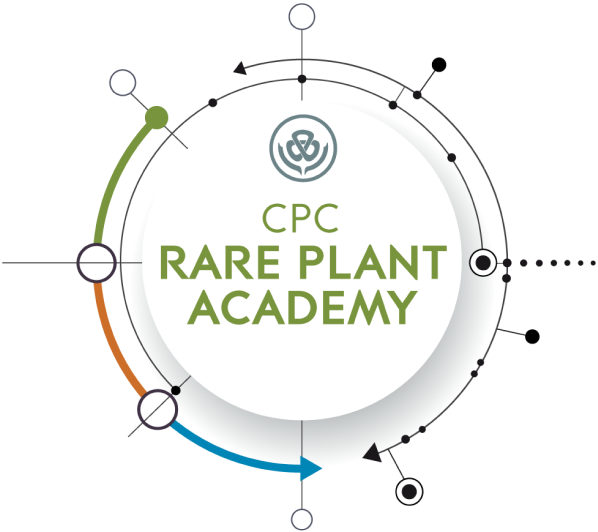
As Seen on CPC’s Rare Plant Academy: Community Feedback Survey
The Center for Plant Conservation’s Rare Plant Academy (RPA) is a hub of learning, sharing, and discovery for the plant conservation community. The RPA serves as a training ground for the next generation of plant conservation scientists, who will be the first line of defense against plant extinction.
This community survey asks about your experience using several RPA resources, including the CPC Best Practices for Species Survival in the Wild, the Video Library, and posting tools such as the community forum.
Your feedback is important to us. A few minutes of your time will help us improve the Rare Plant Academy, to better serve our community working to Save Plants!
Take the survey!
Get Updates
Get the latest news and conservation highlights from the CPC network by signing up for our newsletters.
Sign Up Today!Ways to Help CPC

Support CPC By Using AmazonSmile
As many of us are now working from home and relying on home delivery more and more, we want to remind you that you can keep your home stocked AND Save Plants. If you plan to shop online, please consider using AmazonSmile.
AmazonSmile offers all of the same items, prices, and benefits of its sister website, Amazon.com, but with one distinct difference. When you shop on AmazonSmile, the AmazonSmile Foundation contributes 0.05 percent of eligible purchases to the charity of your choice. (Center for Plant Conservation).
There is no cost to charities or customers, and 100 percent of the donation generated from eligible purchases goes to the charity of your choice.
AmazonSmile is very simple to use—all you need is an Amazon account. On your first visit to the AmazonSmile site, you will be asked to log in to your Amazon account with existing username and password (you do not need a separate account for AmazonSmile). You will then be prompted to choose a charity to support. During future visits to the site, AmazonSmile will remember your charity and apply eligible purchases towards your total contribution—it is that easy!
If you do not have an Amazon account, you can create one on AmazonSmile.
Once you have selected Center for Plant Conservation as your charity, you are ready to start shopping. However, you must be logged into smile.amazon.com—donations will not be applied to purchases made on the Amazon.com main site or mobile app. It is also important to remember that not everything qualifies for AmazonSmile contributions.
So, stay safe inside, and when ordering online, remember you can still help save plants. Please feel free to share this email with your friends and family and ask them to select Center for Plant Conservation.
Thank you all for ALL you do.
Donate to CPC
Thank you for helping us save plant species facing extinction by making your gift to CPC through our secure donation portal!
Donate Today